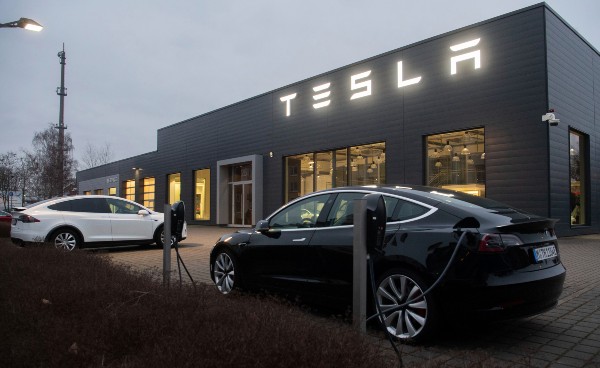:quality(80)/cloudfront-us-east-1.images.arcpublishing.com/morningstar/6BCTH5O2DVGYHBA4UDPCFNXA7M.png)
Larry Swedroe, head of financial and economic research at Buckingham Wealth Partners, is a familiar figure in the media, tirelessly informing investors and would-be investors about the benefits of evidence-based investing. (Among other gigs, Swedroe writes for Morningstar magazine.) In 2022, Swedroe and co-author Samuel C. Adams, CEO of Vert Asset Management, published Your Essential Guide to Sustainable Investing, which delved into the academic literature about a variety of claims about sustainable investing, ranging from performance to effectiveness. The book by Swedroe and Adams is a welcome guide at a time when sustainable investing has faced a backlash. For Swedroe’s advice about how to navigate the world of sustainable investing, keep reading.
Norton: Your book came out as the political backlash against environmental, social, and governance investing began, which coincided with the Ukraine war causing a rally in fossil fuels. When you were writing your book, flows were lifting valuations. Now those flows have reversed. Is this still a legitimate form of investing?
Swedroe: Certainly. Investors have the right, and now the ability, to express their values through their investments. It’s a personal decision.
Does ESG Investing Underperform?
Norton: What does economic theory say about the impact of sustainable investing on risk and return?
Swedroe: It’s simple and commonsense-oriented. If you’re going to invest sustainably, you should expect lower returns. In equilibrium, if a large enough group of investors screen out certain assets based on their preferences, that has to lead to lower prices for those investments that get screened out. When we invest the cash in the favorable stocks that have good ESG or sustainable-investment ratings, the valuations of those stocks will go up relative to the screened-out assets. What does that mean? The favored companies, because they have higher valuations, have a lower cost of capital. The flip side is a lower expected return to investors. The screened-out assets have a higher cost of capital, meaning a higher expected return to the people who are willing to provide that capital in return for accepting the risks of owning companies with low scores.
You’re seeing some of the backlash because there was a lot of promotion that you could have your cake and eat it too with ESG—get the same or higher returns and also have less risk and express your values.
Conflicting Evidence on ESG Performance
Norton: You looked at the scholarly research on performance. What’s the best evidence of underperformance?
Swedroe: Many, many studies that all confirm that this is the case. A study way back on a sin portfolio shows 1% to 2% [underperformance] a year.
But you can have conflicting evidence.
Up until 2017 or so, when cash flows started to really come into ESG because major natural events such as forest fires and climate change issues became more prominent, brown portfolios outperformed green. Money started coming into ESG with the Paris Agreement, and then all of a sudden around 2016-2017, it turned into tens of billions of dollars a month. And that drove the valuations of the green stocks up and the valuations of the brown stocks down.
One study found that once you adjusted for risk and looked at factor exposures, while the brown stocks have an expected higher return of, let’s call it, 3% a year, the green stocks between 2017 and 2022 outperformed by like 7% a year. That meant the cash flows were driving about a 10% improvement in the returns to green. What most investors don’t understand, sadly, is if you’re driving valuations up, you’re driving future expected returns down. And then of course, we started to get the reverse. You’re seeing money flow out. So you have to be aware. The trend from 2017 through 2020 fooled a lot of people.
Are Companies With Low ESG Scores Riskier?
Norton: What about the hypothesis that companies with low ESG or sustainability scores are more at risk?
Swedroe: It’s also valid. They’re more at risk for pollution, for fraud because they don’t have good governance, they’re at risk for government interventions that could increase their costs. Companies that manage their ESG exposures well are subject to less risk. If you’re subject to less risk, you should have a higher valuation. Everyone should understand that risk and expected return are related. An oil spill is a problem for ExxonMobil. So there are two hypotheses: One, there could be a risk premium, and two, there’s also a preference premium.
My last point: Investors with screened-out assets clearly have a less diversified portfolio because they’re screening out a whole bunch of industries. By definition, a less diversified portfolio is also a less efficient one. One way to address the problem is don’t screen out entire industries but screen out the poorly rated companies, which is what fund companies like Dimensional Fund Advisors have done. A good example is that a company with the most green patents might be an oil stock, because they’re investing in [solutions] for renewable energy. If you raise their cost of capital by screening them out, you’re preventing them from getting capital to invest in the green revolution here. You’re much better off screening out the poor performers. But these are personal decisions.
Norton: Another reason people invest sustainably is to affect corporate behavior. What does the evidence tell us?
Swedroe: Investors with an ESG preference can actually feel good that they’re impacting corporate behavior. Companies naturally want to have a low cost of capital, right? It gives them a competitive advantage. They can make more investments. Their stock prices will be higher, rewarding their shareholders and employees on stock. Clearly, companies are making efforts to drive their ESG scores higher. You’re seeing that with DEI, pollution initiatives. Companies with improving ESG scores end up with higher valuations.
High-scoring firms logically have lower returns, in that safer investments and higher valuations equal lower expected returns. But improving scores leads to new cash flows, and in the short term that leads to capital gains and outperformance.
Swedroe’s Advice for ESG Investors
Norton: So, what’s an investor to do?
Swedroe: This is what I recommend. … One, they can decide that they’re going to drive to get the highest return, and ignore ESG totally, and take the 1% or whatever of outperformance and donate it to causes they believe in. Two, they can use a fund family like Dimensional Fund Advisors, which doesn’t screen out entire industries, which rewards companies that are making efforts and tilts the portfolio toward factors that have higher expected returns—profitability, quality, value. So you can offset some of the negative expected returns from owning ESG by tilting your portfolio so you own only the ESG stocks that have high exposure to these factors. This may not be perfectly aligned with your beliefs, but sometimes perfect is the enemy of the good enough. This way you can get higher expected returns and express your values generally, if not perfectly. Three, you could choose a fund family that’s close to your ideas, that are systematic in how they define their universe. Just avoid the high-expense, actively managed funds and use more systematic strategies, because we know the enemy of returns is expenses. You should recognize that you’re going to pay a price because ESG screens cost more. Look to keep costs down.
Norton: Do investors need to be concerned about factor exposure risks with sustainable investing?
Swedroe: Every strategy has factor exposure. Beta is a factor, and thus any equity strategy will have beta exposure. Typically, though, sustainable strategies tend to be in growth, not value, companies and to be in sectors that don’t pollute much, so not like manufacturing and energy. And they, too, tend to be growthy sectors. And growth has lower expected returns.
Also, high-scoring firms tend to be large companies that can spend the money on ESG initiatives. So if you want exposure to size and value factors and be ESG-oriented, you need to own firms that within ESG or sustainable strategies tilt to these factors, to offset the lower expected returns from large and growth companies. DFA does that. They also tilt toward profitability. Avantis Investors and others do that as well.
Norton: If sustainable equity investing is often just large-company quality investing, how will it perform in 2024?
Swedroe: My crystal ball is always cloudy. Chasing performance is a big-time loser’s game. I would tell people to look at valuations. If valuations of large, quality companies are high, then you should expect lower future returns going forward. But you can get long periods where assets that have low expected returns continue to outperform. That’s why you need discipline.




















